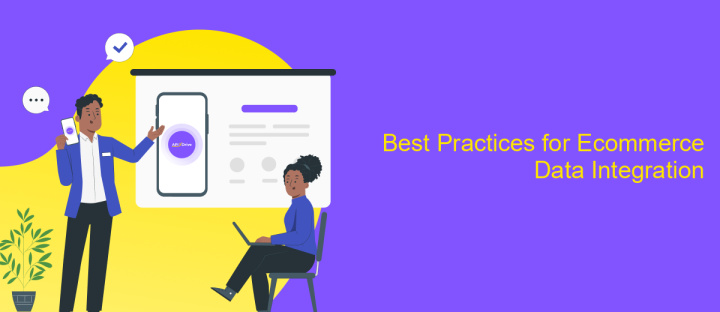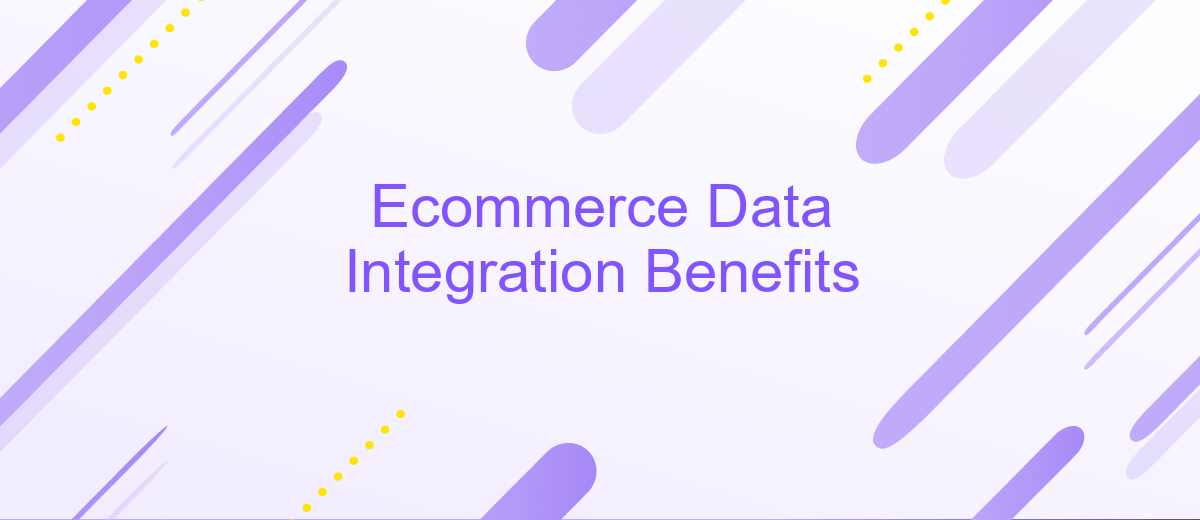Ecommerce Data Integration Benefits
In today's digital landscape, seamless ecommerce data integration is crucial for businesses aiming to stay competitive. By unifying disparate data sources, companies can enhance operational efficiency, improve customer experiences, and drive informed decision-making. This article explores the key benefits of ecommerce data integration, demonstrating how it can transform your business operations and provide a significant edge in the marketplace.
Why Ecommerce Data Integration Is Essential
In the rapidly evolving world of ecommerce, data integration is no longer a luxury but a necessity. Seamlessly integrating data across various platforms and systems ensures that businesses can operate efficiently, make informed decisions, and provide a superior customer experience. Without proper data integration, ecommerce businesses face challenges such as data silos, inconsistent information, and operational inefficiencies.
- Improved Decision-Making: Unified data provides a holistic view of the business, enabling better strategic decisions.
- Enhanced Customer Experience: Integrated data helps personalize customer interactions, leading to increased satisfaction and loyalty.
- Operational Efficiency: Streamlined processes reduce manual efforts and minimize errors, saving time and resources.
- Real-Time Insights: Access to up-to-date information allows businesses to respond quickly to market changes.
- Scalability: Integrated systems can easily adapt to growing business needs and new technologies.
Ultimately, ecommerce data integration is essential for maintaining a competitive edge in the market. By leveraging integrated data, businesses can optimize their operations, enhance customer engagement, and drive growth. Investing in robust data integration solutions is a strategic move that pays off in the long run.
Key Benefits of Ecommerce Data Integration

Integrating ecommerce data offers businesses a unified view of their operations, enhancing decision-making and efficiency. By consolidating data from various platforms, companies can streamline inventory management, optimize customer service, and improve sales strategies. This integration reduces manual data entry, minimizing errors and saving valuable time, which can be redirected towards growth-oriented activities.
Moreover, using tools like ApiX-Drive simplifies the integration process, allowing seamless connectivity between different ecommerce platforms and applications. This enables real-time data synchronization, ensuring that all systems are up-to-date and accurate. As a result, businesses can respond swiftly to market changes, enhance customer experiences, and drive overall profitability. The ability to integrate data effortlessly not only fosters operational efficiency but also provides a competitive edge in the dynamic ecommerce landscape.
Challenges of Ecommerce Data Integration

Integrating data in ecommerce systems can be a complex and challenging task, often requiring significant resources and expertise. Businesses must navigate a variety of obstacles to ensure seamless data integration, which is crucial for maintaining operational efficiency and providing a cohesive customer experience.
- Data Silos: Different departments may use disparate systems, creating isolated data pockets that are difficult to unify.
- Data Quality: Inconsistent or inaccurate data can lead to errors and misinformed decisions, making data cleansing a necessary but time-consuming process.
- Scalability: As businesses grow, their data integration solutions must be able to handle increased data volumes and complexity without sacrificing performance.
- Security Concerns: Ensuring data privacy and protection during integration processes is critical, especially with stringent regulations like GDPR.
- Cost: Implementing and maintaining robust data integration solutions can be expensive, requiring both financial investment and ongoing support.
Addressing these challenges requires a strategic approach, leveraging advanced technologies and best practices. By overcoming these hurdles, businesses can achieve a unified data ecosystem that supports better decision-making and enhances overall efficiency.
Best Practices for Ecommerce Data Integration

Effective ecommerce data integration can significantly improve business operations and customer experience. To ensure seamless integration, it's essential to follow best practices that enhance data accuracy and accessibility.
Firstly, establish clear data governance policies. This involves defining data ownership, access controls, and data quality standards. Proper governance ensures that all stakeholders understand their roles and responsibilities, reducing the risk of data inconsistencies.
- Utilize standardized data formats to facilitate smoother data exchange between systems.
- Implement real-time data synchronization to keep information up-to-date across all platforms.
- Leverage API integrations for efficient and scalable data communication.
- Regularly audit and cleanse data to maintain its accuracy and relevance.
- Ensure robust security measures to protect sensitive customer information.
By adhering to these best practices, businesses can optimize their ecommerce data integration processes, leading to improved decision-making, enhanced customer satisfaction, and a competitive edge in the market. Regularly reviewing and updating integration strategies will further ensure long-term success.


Case Studies and Success Stories
One of the most compelling examples of successful ecommerce data integration is the case of a mid-sized online retailer who leveraged ApiX-Drive to streamline their operations. Prior to integrating their various platforms, the retailer faced significant challenges in managing inventory, processing orders, and maintaining up-to-date customer information. By implementing ApiX-Drive, they were able to automate data transfers between their ecommerce platform, CRM, and inventory management system. This led to a 30% reduction in order processing time and a 20% increase in customer satisfaction due to faster and more accurate service.
Another success story comes from a global fashion brand that utilized ApiX-Drive to integrate their ecommerce platform with multiple third-party logistics providers. Before integration, the brand struggled with delayed shipments and miscommunication between their sales and logistics teams. By using ApiX-Drive, they created a seamless data flow that provided real-time updates on inventory levels and shipping statuses. This not only improved operational efficiency but also enhanced the customer experience by providing accurate delivery timelines and reducing the number of lost or delayed packages.
FAQ
What is Ecommerce Data Integration?
Why is Ecommerce Data Integration important for my business?
How can Ecommerce Data Integration improve my customer experience?
What are the challenges associated with Ecommerce Data Integration?
How can I automate Ecommerce Data Integration?
Apix-Drive is a universal tool that will quickly streamline any workflow, freeing you from routine and possible financial losses. Try ApiX-Drive in action and see how useful it is for you personally. In the meantime, when you are setting up connections between systems, think about where you are investing your free time, because now you will have much more of it.

